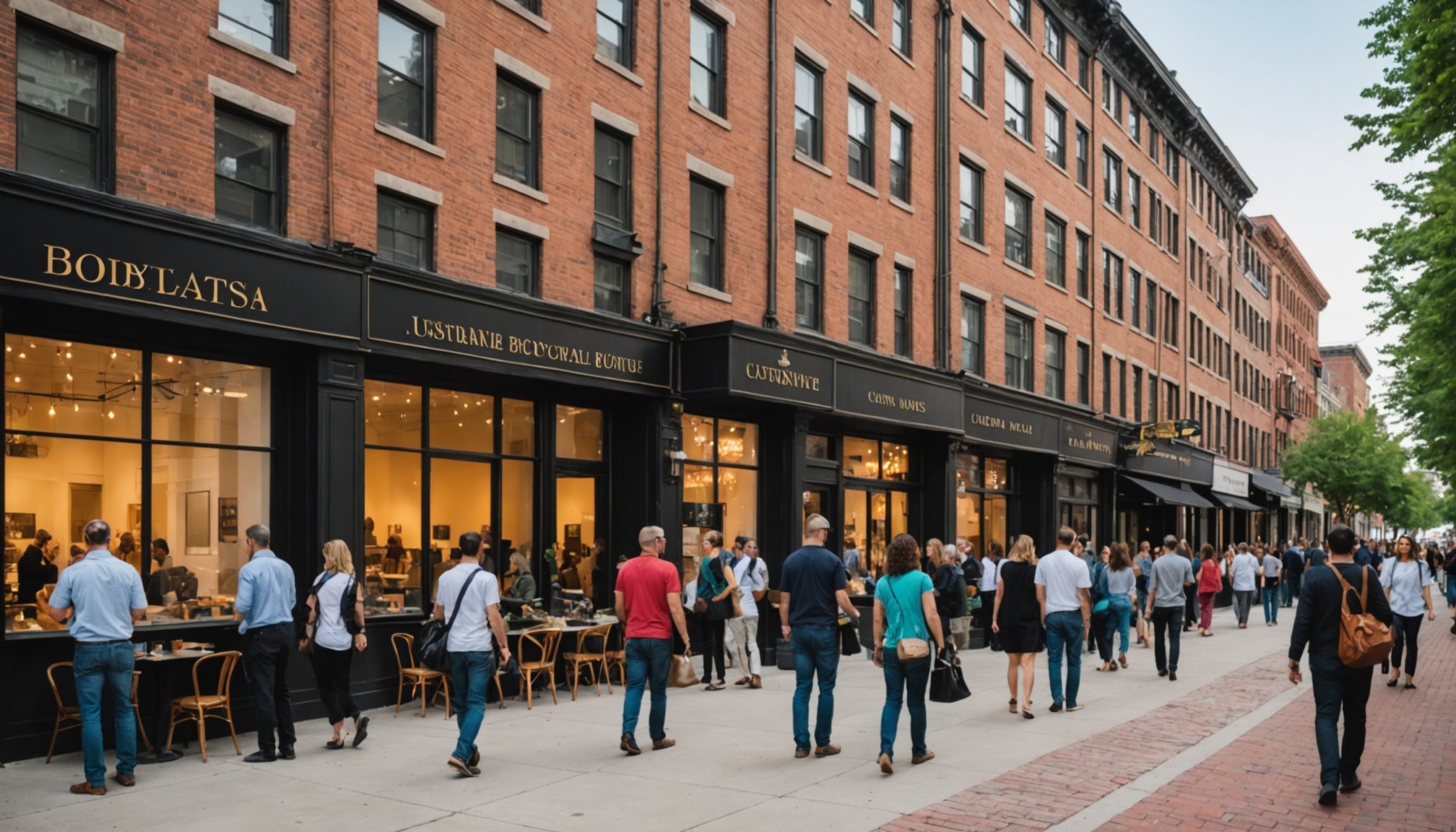Unveiling the Economic Impact of Cultural Districts on Urban Real Estate Markets to Cultural Districts and Their Significance
Cultural districts have become a cornerstone of urban development, transforming cities into vibrant, inclusive, and economically thriving hubs. These areas, often characterized by a rich cultural heritage, artistic expression, and historical significance, attract a diverse range of residents, visitors, and businesses. But what is the economic impact of these cultural districts on urban real estate markets? Let’s delve into the details to understand the multifaceted effects.
Economic Development and Job Creation
Cultural districts are often at the heart of economic development in cities. They attract a variety of businesses, from art galleries and museums to restaurants, cafes, and boutique shops. This diversity of enterprises not only enhances the local economy but also creates a plethora of job opportunities.
Topic to read : Discreet Innovations: Enhancing Luxury Homes with Elegant Security Solutions
For instance, the revitalization of the Cartier sector in Laval, Canada, is a prime example. The city’s vision includes developing affordable housing, local businesses, and cultural amenities, all of which contribute to the economic vitality of the area. As noted in the revitalization plan, “Proposer des locaux d’activité abordables pour les entreprises d’économie sociale et travailleurs du quartier” is a key priority, highlighting the focus on economic inclusivity and job creation[1].
Impact on Housing Prices and Property Values
The presence of cultural districts can significantly influence housing prices and property values. Areas with rich cultural heritage and amenities tend to attract more residents and investors, leading to increased demand for housing.
Also read : Game-changing innovations enhancing security in high-rise residential buildings
A study by Gabriel Ahlfeldt, a scholar in urban economics, highlights the positive impact of cultural amenities on property values. According to Ahlfeldt, “the presence of cultural amenities can increase property values by making the area more desirable to live in”.
Here is a comparative table illustrating the impact of cultural districts on housing prices and property values:
| Area | Presence of Cultural Districts | Housing Prices | Property Values |
|---|---|---|---|
| Laval, Canada | Yes (Cartier sector) | Increased | Higher |
| Morbihan, France | Yes (Vannes and Auray) | Increased | Higher |
| New York City, USA | Yes (SoHo and Greenwich Village) | Significantly Increased | Higher |
| Paris, France | Yes (Montmartre) | Increased | Higher |
Short-Term Rentals and Airbnb Effect
The rise of short-term rental platforms like Airbnb has added a new layer of complexity to the economic impact of cultural districts. While Airbnb can boost local economies by attracting tourists, it also poses challenges such as housing shortages and increased property values.
In areas like New York City and Paris, the proliferation of Airbnb rentals has led to concerns about housing affordability and neighborhood gentrification. As noted in an analysis on the Airbnb effect, “the influx of short-term rentals can exacerbate existing housing affordability issues and widen the gap between supply and demand”[4].
Here are some key points on the impact of Airbnb on cultural districts:
- Increased Rental Demand: Airbnb increases demand for short-term rentals, potentially leading to higher rental income but also reducing the availability of long-term housing.
- Supply Constraints: The conversion of long-term rentals to short-term rentals can contribute to housing shortages.
- Impact on Property Values: Neighborhoods with high concentrations of Airbnb rentals may experience increased property values, but this can also lead to gentrification and displacement of long-term residents[4].
Conservation Areas and Historic Districts
Cultural districts often overlap with conservation areas and historic districts, which have their own set of economic implications. These areas are protected for their historical and cultural significance, and any development must adhere to strict conservation guidelines.
For example, the historic districts in Morbihan, France, such as Vannes and Auray, are highly prized for their architectural heritage. The development of new housing and amenities in these areas must be done in a way that preserves the historical identity of the region. This approach not only maintains the cultural heritage but also attracts tourists and residents who value living in a historically rich environment[3].
Social Economic Impact and Community Engagement
The economic impact of cultural districts is not limited to financial metrics; it also has a profound social economic impact. These areas foster community engagement, social cohesion, and a sense of belonging among residents.
In the context of the Cartier sector revitalization, the city of Laval emphasizes the importance of community involvement. The plan includes initiatives to “Renforcer l’implication des résidents et le sentiment d’appartenance,” which highlights the commitment to creating a community-driven and inclusive environment[1].
Here are some ways cultural districts enhance social economic outcomes:
- Community Engagement: Cultural events and amenities encourage community participation and social interaction.
- Social Cohesion: Mixed-use developments that include housing, local businesses, and community spaces help build a cohesive community.
- Sense of Belonging: Preserving cultural heritage and historical identity helps residents feel connected to their neighborhood.
Spatial Analysis and Urban Economics
Understanding the economic impact of cultural districts requires a spatial analysis that considers the urban economics context. This involves examining how different spatial factors, such as proximity to amenities and public transportation, influence economic outcomes.
A study published on Google Scholar by urban economics scholars discusses the use of fixed effects models to analyze the impact of cultural amenities on property values. The study concludes that “the spatial distribution of cultural amenities has a significant positive effect on property values, even after controlling for other spatial factors”.
Here is an example of how spatial analysis can be applied:
| Spatial Factor | Impact on Property Values |
|---|---|
| Proximity to Cultural Amenities | Positive Increase |
| Proximity to Public Transportation | Positive Increase |
| Proximity to Schools and Parks | Positive Increase |
| Density of Population | Mixed Effects |
Practical Insights and Actionable Advice
For city planners, developers, and residents, here are some practical insights and actionable advice on how to leverage the economic impact of cultural districts:
- Integrate Mixed-Use Developments: Combine housing, local businesses, and community spaces to create vibrant and inclusive neighborhoods.
- Preserve Cultural Heritage: Ensure that new developments respect and preserve the historical and cultural identity of the area.
- Encourage Community Engagement: Organize cultural events and involve the community in planning and development processes.
- Regulate Short-Term Rentals: Implement policies that balance the economic benefits of short-term rentals with the need to maintain affordable housing for long-term residents.
Cultural districts are more than just aesthetically pleasing areas; they are economic engines that drive urban development. By understanding the various facets of their economic impact, cities can better plan and manage these areas to ensure they benefit all stakeholders.
As Gabriel Ahlfeldt succinctly puts it, “Cultural amenities are not just nice to have; they are a key component of urban economics, influencing property values, housing prices, and the overall quality of life in a city.”
In conclusion, the economic impact of cultural districts on urban real estate markets is multifaceted and far-reaching. It involves economic development, job creation, housing prices, short-term rentals, conservation areas, social economic impact, and spatial analysis. By leveraging these factors, cities can create vibrant, inclusive, and economically thriving cultural districts that enrich the lives of their residents.

